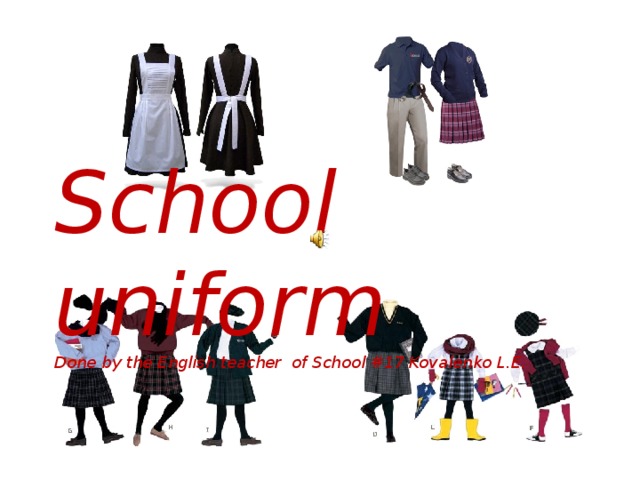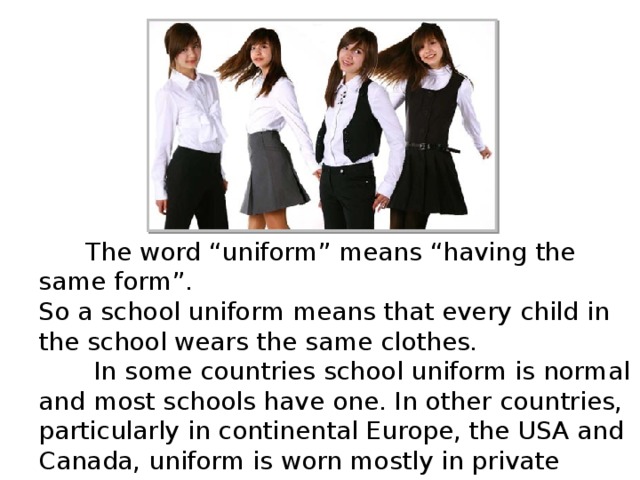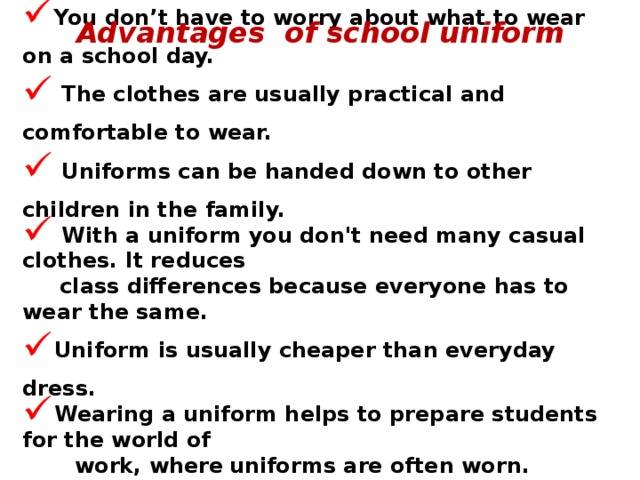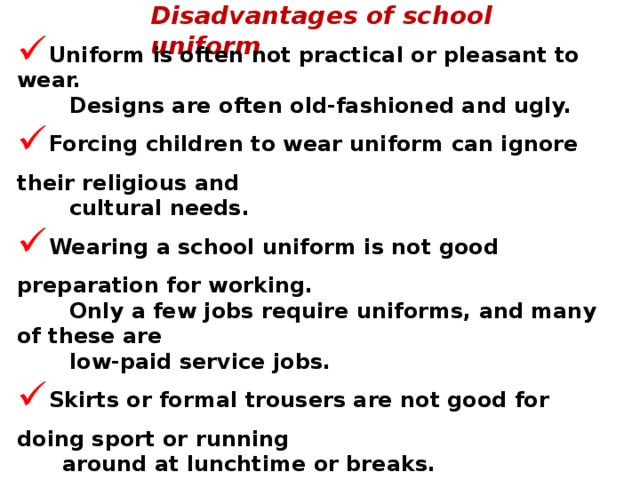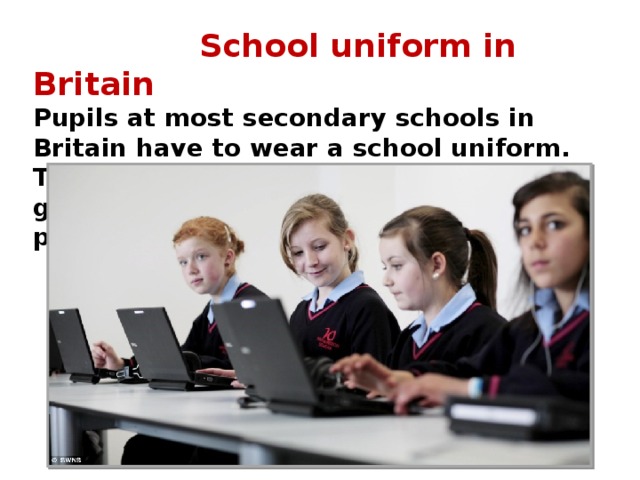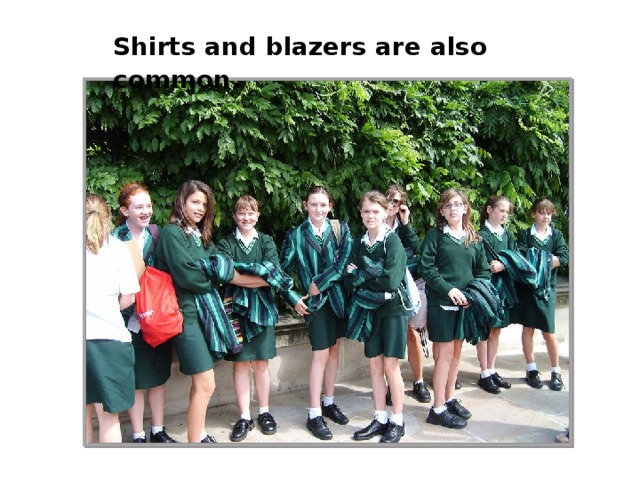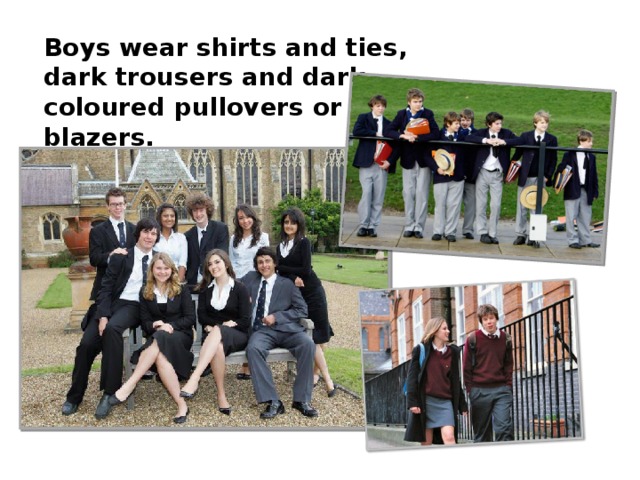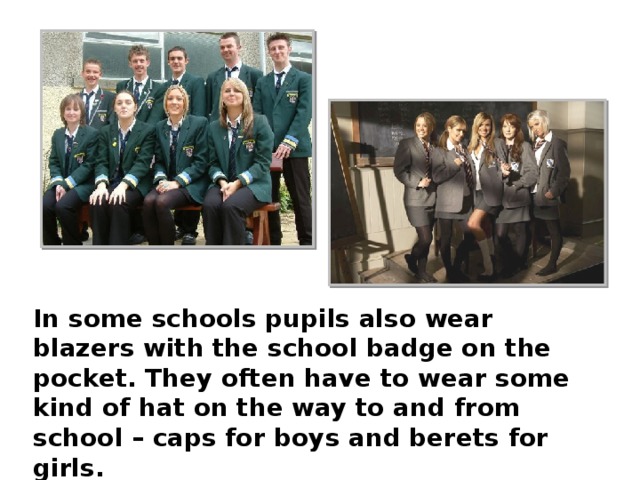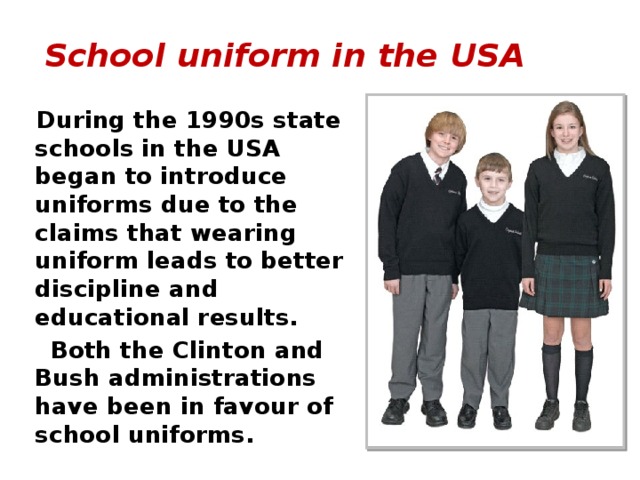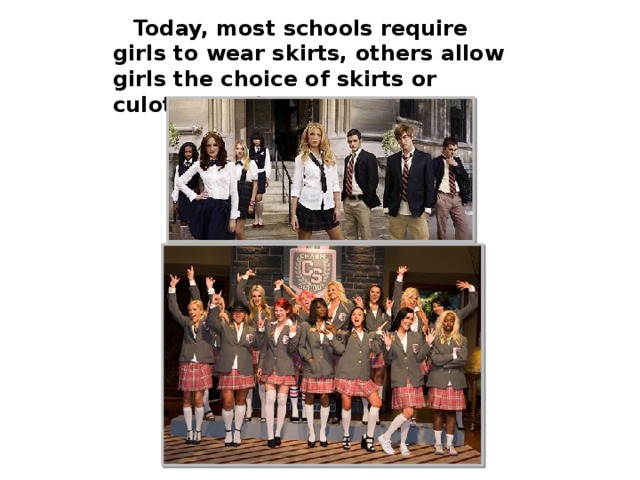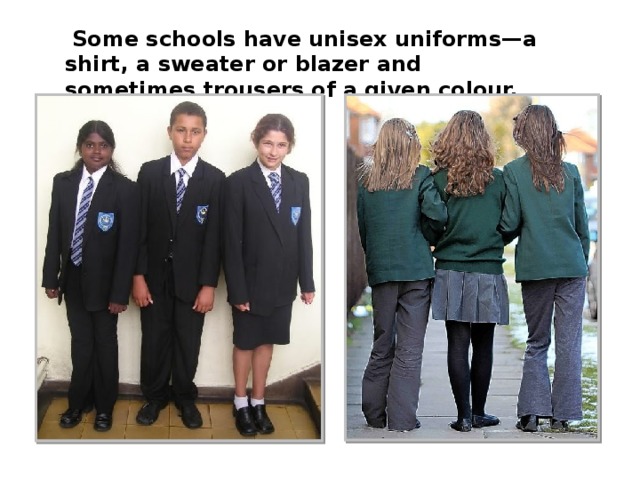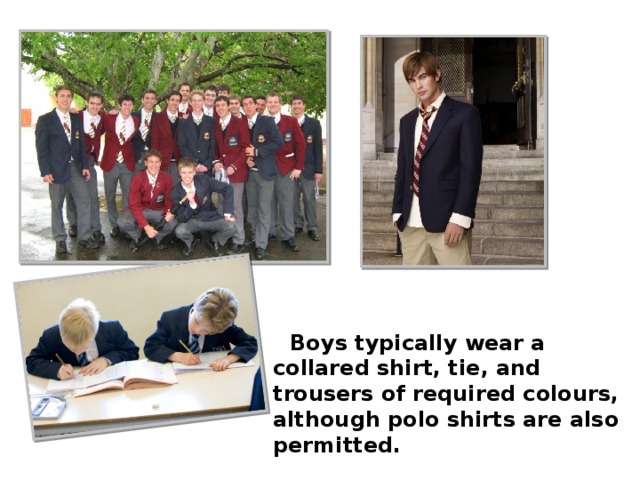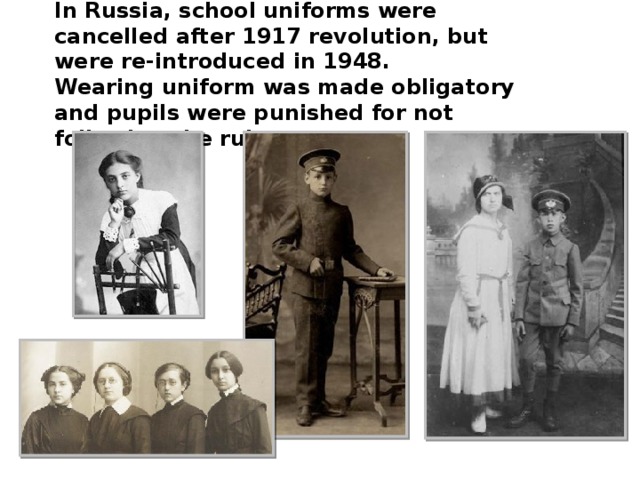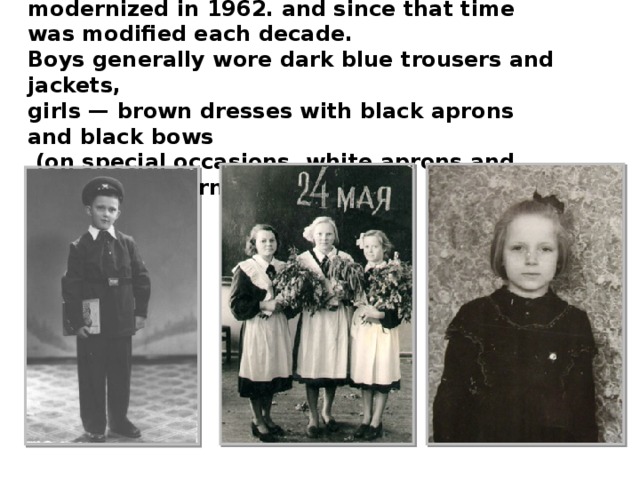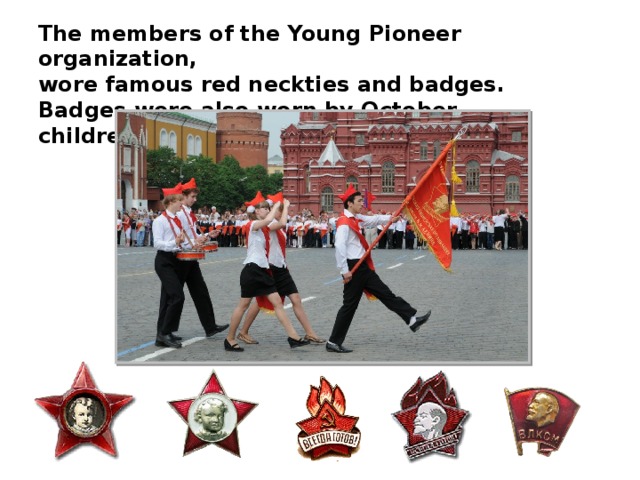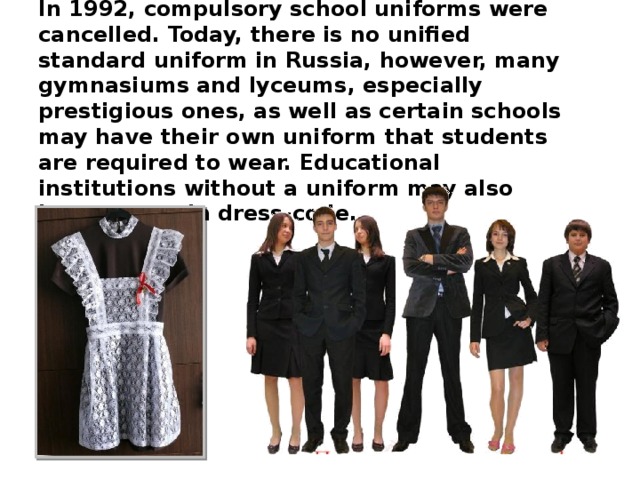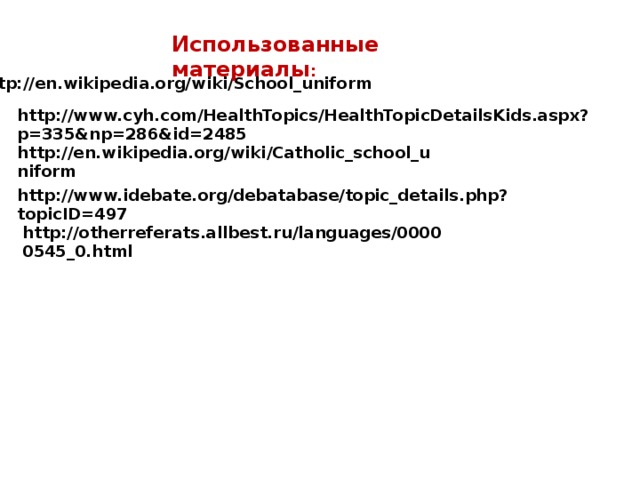Данная презентация предназначена для урока английского языка по теме "School uniform" по программе "Enjoy English", 10 класс., является наглядным материалом для ознакомления учащихся с историей школьной формы в России и в других странах. Использование данной презентации расчитана, чтобы помочь учащимся легче усвоить лексический материал по данной теме.
Создайте Ваш сайт учителя Видеоуроки Олимпиады Вебинары для учителей
Презентация по теме "School uniform" для учеников 10 класса
Вы уже знаете о суперспособностях современного учителя?
Тратить минимум сил на подготовку и проведение уроков.
Быстро и объективно проверять знания учащихся.
Сделать изучение нового материала максимально понятным.
Избавить себя от подбора заданий и их проверки после уроков.
Наладить дисциплину на своих уроках.
Получить возможность работать творчески.
Просмотр содержимого документа
«Презентация по теме "School uniform" для учеников 10 класса»
Предмет: Английский язык
Категория: Презентации
Целевая
аудитория: 10 класс.
Урок соответствует ФГОС
Полезное для учителя
Распродажа видеоуроков!
1850 руб.
3080 руб.
1600 руб.
2660 руб.
1520 руб.
2530 руб.
1610 руб.
2690 руб.
ПОЛУЧИТЕ СВИДЕТЕЛЬСТВО МГНОВЕННО
* Свидетельство о публикации выдается БЕСПЛАТНО, СРАЗУ же после добавления Вами Вашей работы на сайт
Удобный поиск материалов для учителей
Проверка свидетельства
